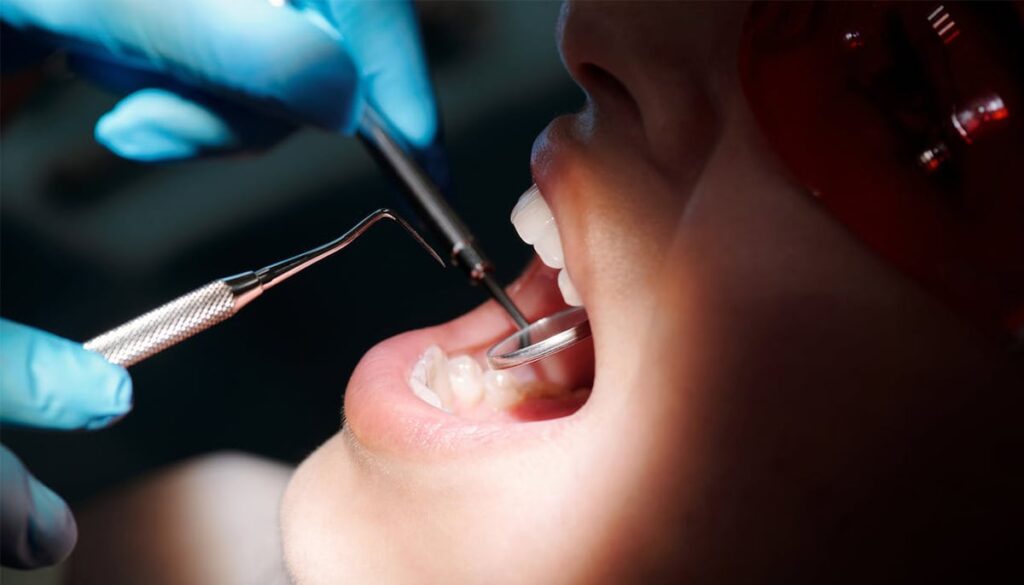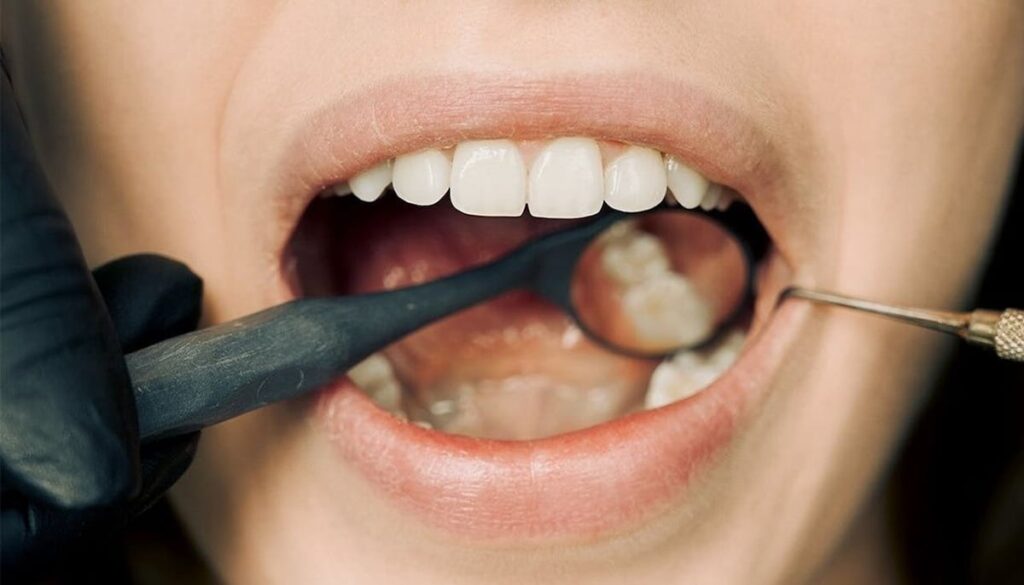Investigating the Effects of Whitening Agents on Enamel Health
Short-Term Effects: Sensitivity and Mild Irritation
One of the most common side effects of teeth whitening is increased tooth sensitivity. This occurs due to the temporary softening of the enamel during the bleaching process, exposing the dentin and nerve endings.
Additionally, some individuals may experience mild gum irritation. These effects are usually short-lived and subside after the treatment.
Long-Term Consequences: Are They a Cause for Concern?
Research on the long-term effects of teeth whitening on enamel is ongoing.
While some studies suggest that excessive and repeated use of high-concentration bleaching agents can cause enamel erosion and degradation, these cases are relatively rare and often linked to misuse or overuse of whitening products.
Introduction to Teeth Whitening and Enamel Safety

The Growing Popularity of Teeth Whitening: A Consumer Trend
In recent years, teeth whitening has become a widely popular cosmetic procedure, appealing to individuals seeking a brighter, more attractive smile.
However, amidst this growing trend, concerns about the safety of these procedures, particularly regarding enamel health, have surfaced.
This article aims to delve into the core of these concerns, scrutinizing whether teeth whitening methods truly pose a risk to our dental enamel.
Enamel: Understanding Its Role and Importance
Before we explore the effects of teeth whitening on enamel, it’s crucial to understand what enamel is and why it’s significant.
Enamel, the outermost layer of our teeth, serves as a protective shield against physical and chemical damage.
It’s one of the hardest substances in the human body, yet despite its toughness, it’s not immune to damage.
Examining Teeth Whitening Techniques and Their Impact on Enamel

The Science Behind Teeth Whitening
Teeth whitening procedures, whether done professionally or via at-home kits, typically use bleaching agents like hydrogen peroxide or carbamide peroxide.
These agents work by breaking down into oxygen molecules that penetrate the porous structure of the enamel and dentin, breaking down the stains that cause discoloration.
Professional Whitening Procedures: Safety and Efficacy
Dentists often use higher concentrations of bleaching agents in professional whitening treatments, which can raise questions about their impact on enamel health.
However, these procedures are generally considered safe when conducted under professional supervision.
Dentists take precautions such as using gum protectors and carefully controlling the application time to minimize any potential harm to the enamel.
At-Home Whitening Products: A Balancing Act
The market is flooded with a range of at-home whitening products, from strips and gels to toothpaste and rinses.
These products contain lower concentrations of bleaching agents, making them safer for unsupervised use. However, the prolonged or incorrect use of these products can lead to enamel damage.
It’s essential for consumers to follow the instructions meticulously and be aware of the potential risks.
Balancing Aesthetics and Oral Health: Recommendations for Safe Whitening

Professional Consultation: The First Step to Safe Whitening
For those considering teeth whitening, the first step should always be a consultation with a dental professional.
Dentists can assess oral health, identify any underlying issues that may be affected by whitening treatments, and recommend the most suitable and safe method.
Best Practices for At-Home Whitening
For at-home whitening, it’s crucial to choose products that are ADA-approved and to strictly adhere to the guidelines provided.
This includes monitoring the frequency of use, duration of treatment, and being vigilant about any adverse reactions.
Delving Deeper into the Science and Expert Opinions
Analyzing Scientific Research on Enamel and Whitening Agents
Recent studies have focused on understanding the microscopic changes that occur in enamel when exposed to bleaching agents.
Advanced imaging techniques have revealed alterations in the enamel’s microstructure, suggesting that while the surface may appear unharmed, there can be underlying changes.
However, these studies also indicate that with proper application and controlled usage, these structural changes do not necessarily translate into significant enamel damage.
Expert Opinions: Dentists and Researchers Weigh In
Dental professionals and researchers largely agree that when used correctly, the risk of permanent enamel damage from teeth whitening is minimal.
They emphasize the importance of following product instructions and the guidance of dental professionals.
Customized treatments based on individual dental health profiles are recommended over one-size-fits-all solutions.
Case Studies: Real-world Examples and User Experiences
Real-world case studies and user testimonials provide valuable insights into the practical aspects of teeth whitening.
Instances of enamel damage are often linked to overuse of whitening products or the use of non-approved, high-concentration bleaching agents.
These cases highlight the importance of responsible use and adherence to recommended guidelines.
The Role of Ingredients: Beyond Peroxide
Natural Whitening Alternatives: Are They Safer?
In response to concerns about chemical bleaching agents, there has been a surge in natural whitening products using ingredients like activated charcoal, baking soda, and coconut oil.
While these natural alternatives are perceived as safer, it’s important to understand their abrasive nature, which can potentially cause enamel wear over time.
Innovations in Whitening Technology: Enamel-Safe Developments
The dental industry is continually innovating, with newer whitening products claiming to be safer for enamel.
Some of these advancements include non-peroxide-based formulas and technologies that claim to whiten teeth without the need for harsh chemicals.
It’s essential to approach these new products with cautious optimism, awaiting robust scientific validation.
Navigating the World of Teeth Whitening: Consumer Guidance
Understanding Product Labels and Claims
Consumers are often bombarded with marketing claims and product labels that can be confusing.
It’s crucial to understand what terms like “enamel-safe” and “peroxide-free” mean and the clinical evidence supporting these claims.
Relying on ADA-approved products and those with transparent ingredient lists is advisable.
Managing Expectations: What’s Realistic and What’s Not
Setting realistic expectations is key to a satisfying teeth whitening experience.
It’s important to understand that results can vary based on individual factors like the natural color of teeth, the type of staining, and the chosen whitening method.
Unrealistic expectations can lead to overuse and potential enamel damage.
Preventive Measures, Maintenance, and Future Trends
Understanding the Limits: When to Whiten and When to Wait
It’s crucial to understand that teeth whitening isn’t suitable for everyone. Individuals with dental issues like cavities, gum disease, or worn enamel should address these problems before considering whitening treatments.
Also, pregnant women and young teens are advised to avoid teeth whitening.
Pre-Whitening Dental Assessment: A Must-Do Step
A thorough dental check-up prior to any whitening treatment is essential. This assessment helps identify any potential risks and ensures that the chosen method is safe and appropriate for the individual’s dental health.
Maintenance Tips Post-Whitening: Prolonging Results While Protecting Enamel
Daily Dental Care: The Foundation of Enamel Health
Maintaining a rigorous oral hygiene routine is pivotal. Regular brushing with fluoride toothpaste, flossing, and using an enamel-strengthening mouthwash can help preserve both the whiteness and the integrity of the enamel.
Dietary Considerations: Foods and Beverages to Avoid
Certain foods and beverages, like coffee, red wine, and acidic foods, can stain teeth and erode enamel.
Minimizing consumption of these items and rinsing the mouth with water after their intake can help maintain the results of teeth whitening and protect enamel.
Future Trends in Teeth Whitening: Innovations and Developments
The Rise of Customized Whitening Solutions
The future of teeth whitening lies in personalized treatments. Advances in dental technology are leading to more customized approaches, tailored to individual needs and dental profiles, ensuring safer and more effective results.
Breakthroughs in Enamel-Safe Whitening Agents
Research is ongoing into developing new, enamel-safe whitening agents. These innovative compounds aim to provide effective whitening without the potential risks associated with traditional bleaching agents.
Final Thoughts: Balancing Aesthetics and Oral Health
In conclusion, while teeth whitening can be a safe cosmetic procedure, it’s imperative to approach it with caution and knowledge.
Understanding the potential impacts on enamel, adhering to best practices, and seeking professional advice are key to achieving a bright smile without compromising dental health.
